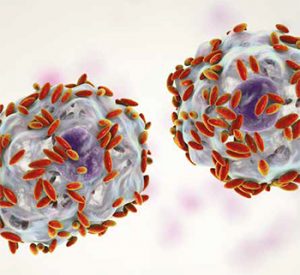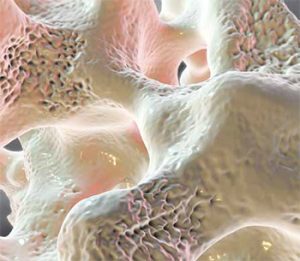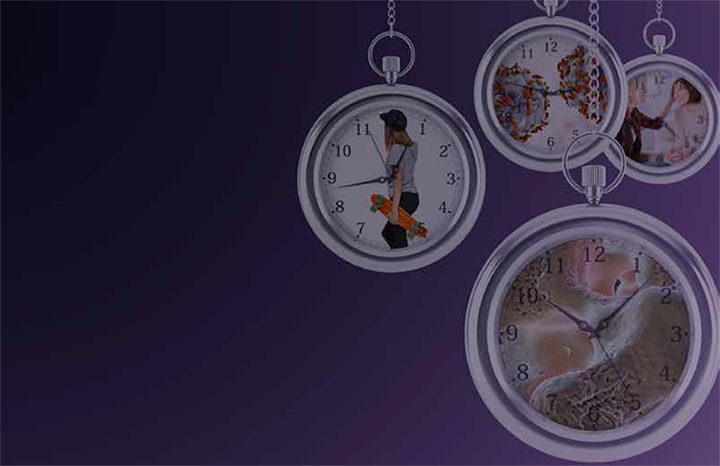Before reading the article, click here to take the pretest.
Over the past year, NPWH sponsored four regional meetings highlighting updates on the management of women’s health issues across a lifespan. The meetings were presented to live audiences using an interactive learning strategy, with several clinical scenarios illustrating issues within four topic areas: contraception, bacterial vaginosis, hypoactive sexual desire disorder, and postmenopausal osteoporosis. The author of this article has chosen one scenario for each topic to demonstrate how this learning strategy can cover important health areas in a way that intrigues and challenges, in this case, our readers.
Scenario #1: Contraception
Long-acting reversible contraceptives (LARC), the most effective of all reversible contraceptives, are becoming more widely used by reproductive-aged women and adolescents. LARC include intrauterine contraceptives (IUCs) and the etonogestrel (ENG) implant. Fewer than 1% of LARC users become pregnant, and their continuation rates at 1 year are significantly higher than those of short-acting birth-control method users (86% vs. 55%).1 LARC have a good safety profile, with very few contraindications; most women are eligible for either IUCs or the ENG implant.2 In fact, for women with conditions that might make pregnancy an unacceptable health risk, LARC might be the best choice to avoid unintended pregnancy. Likewise, LARC might be the best choice for women taking teratogenic drugs for a health condition. The American College of Obstetricians and Gynecologists recommends that LARC be offered as first-line contraceptives and encouraged as options for most females, including adolescents and nulliparous women.1,3 Scenario #1 depicts assessment and management of unscheduled bleeding associated with use of the ENG implant.
 Ava is 17 years old. She is brought to the clinic by her mother, who just learned that her daughter is sexually active. Ava has never been pregnant. Her last menstrual period started 3 days ago. The nurse practitioner (NP) reviews contraceptive methods with Ava, who decides she would like an implant, which is placed at that visit. Ten weeks later, Ava calls the clinic to report that she has been bleeding or spotting every day. She tells the NP, I am sick of the bleeding and I want this thing out. The NP recommends that Ava come to the clinic for evaluation of her bleeding and to discuss how to proceed from there.
Ava is 17 years old. She is brought to the clinic by her mother, who just learned that her daughter is sexually active. Ava has never been pregnant. Her last menstrual period started 3 days ago. The nurse practitioner (NP) reviews contraceptive methods with Ava, who decides she would like an implant, which is placed at that visit. Ten weeks later, Ava calls the clinic to report that she has been bleeding or spotting every day. She tells the NP, I am sick of the bleeding and I want this thing out. The NP recommends that Ava come to the clinic for evaluation of her bleeding and to discuss how to proceed from there.
Unscheduled bleeding is a common side effect of all the progestin-only methods (i.e., progestin-only pills, depot medroxyprogesterone acetate, ENG implant, levonorgestrel [LNG] IUCs). Two recent studies have shown that unpredictable or irregular bleeding is one of the most common reasons cited for early discontinuation of these methods.4,5
What else would be helpful for the NP to know?
Ava tells the NP that she has a new boyfriend. They had sex 6 weeks ago and again 2 weeks ago, without using a condom. She has no pain with sex or abnormal vaginal discharge. She describes her bleeding as lighter than a period (Sometimes it is only spotting) that has occurred on most days since the implant was placed.
Are laboratory tests or a physical examination needed?
Another possible cause of Ava’s irregular bleeding is infection with Chlamydia, especially because she has a new sex partner who does not use a condom. A urine sample is collected for a Chlamydiatest. Because Ava uses a highly effective contraceptive, the NP is reasonably certain that she is not pregnant. Unscheduled bleeding is not indicative of decreased efficacy of the method.6 A pregnancy test could be done if there is concern. A pelvic exam is not needed.
What options are available to manage Ava’s bleeding?
The etiology of unscheduled bleeding with use of progestin-only contraceptives is not fully understood. The bleeding may be due in part to rapid endometrial thinning initially. With sustained use, the endometrium may become more fragile and prone to bleed.6 Studies of various therapies to decrease bleeding have shown mixed results.
The U.S. Selected Practice Recommendations for Contraceptive Use, 2016 (SPR)provides an algorithm to guide management of bleeding irregularities in women using hormonal contraceptives.7 Options to manage bothersome bleeding associated with an implant include a 5- to 7-day course of a nonsteroidal anti-inflammatory drug (NSAID) or a 10- to 20-day course of estrogen (via a combination oral contraceptive [COC], oral conjugated estrogen 1.25 mg, or oral estradiol 2 mg) if medically eligible. Although several studies have shown that treatment with NSAIDs or estrogen controls bleeding associated with various progestin-only contraceptives, these results are not consistently sustained. Moreover, these studies evaluated different NSAIDs and different lengths of time on estrogen, making it difficult to draw firm conclusions.6
After the NP and Ava discuss the options and their possible but uncertain effectiveness, Ava decides to try the COC. The NP prescribes a low-dose COC for 21 days. Two months after treatment, Ava remains without bleeding or spotting. She does have a positive Chlamydiatest result and is treated along with her partner.
Nurse practitioners providing care for reproductive-aged women can help them choose contraceptives that fit their individual lifestyles and preferences. Evidence based guidelines such as the U.S. Medical Eligibility Criteria for Contraceptive Use, 2016and the SPR can assist in appropriate assessment and management for safe and effective contraception.2,7 Strategies to reduce barriers and promote consistent contraceptive use should be individually tailored, and should provide women with knowledge and tools that empower them to prevent unintended pregnancies.
Scenario #2: Recurrent bacterial vaginosis
Factors that alter the vaginal microbiome increase the risk for bacterial vaginosis (BV) by causing a shift in the vaginal microbiota from lactobacillus-dominated bacteria to a variable mixture of anaerobic and facultative bacteria.8,9 These factors include, but are not limited to, sexual behaviors (e.g., frequent vaginal intercourse, multiple male or female sex partners, new sex partner, lack of condom use), hormonal fluctuations, smoking, douching, and antibiotic use. Protective factors may include having a male partner who is circumcised and use of hormonal contraceptives.8-10
Recent studies have detected a polymicrobial biofilm in the vaginal epithelial cells of some women with BV that aids in bacterial persistence and enhances resistance to host defense mechanisms and antibiotics.8,9 This biofilm also may inhibit normal shedding of vaginal epithelial cells needed to provide glycogen as a nutrient source of lactobacilli, further disrupting the healthy vaginal microbiota. The trigger for the change in the vaginal microbiota and the development of the biofilm remains elusive, but it may contribute to persistent or recurrent BV.8,9 BV is typically defined as recurrent if three or more episodes occur per year. Scenario #2 portrays assessment and management of a woman with recurrent BV
 Bea, a 35-year-old woman, presents at the clinic as a new patient with a complaint of bad smelling vaginal discharge again. She states that she just wants a cure that lasts. She tells the NP that she has been treated countless times for BV over the past several years, with temporary relief before the odor and discharge return.
Bea, a 35-year-old woman, presents at the clinic as a new patient with a complaint of bad smelling vaginal discharge again. She states that she just wants a cure that lasts. She tells the NP that she has been treated countless times for BV over the past several years, with temporary relief before the odor and discharge return.
What additional information would be helpful for the NP to obtain?
Bea tells the NP that she has been treated for BV 3 times in the past year, each time with oral metronidazole for 7 days. Her symptoms resolve for a month and then recur when she has a period. The odor is worse after sex. Bea is married and in a monogamous relationship with her husband of 10 years and knows that BV is not a sexually transmitted infection (STI), but she wonders whether he should be treated. Bea admits to douching after sex sometimes to try to eliminate the odor. She is in good health overall, is of normal weight, does not smoke, and is on no medications. She has had no abnormal Pap test results and has never had an STI. Her husband had a vasectomy 3 years ago. They do not use condoms.
A pelvic exam reveals a malodorous thin gray discharge at the vaginal introitus and adhering to the vaginal walls. No erythema or lesions are noted. Vaginal pH is >5.0 and a wet prep shows clue cells, no yeast buds/hyphae, no trichomonads, and no lactobacilli. A potassium hydroxide (KOH) whiff test result is positive. A diagnosis of BV is made based on the presence of at least three Amsel’s criteria: homogeneous thin gray/white discharge, positive whiff test result with 10% KOH, vaginal pH >4.5, and clue cells on microscopy.11
A confirmatory test is not needed. Diagnosis based on identification of Gardnerella vaginalison vaginal culture is insufficient; G. vaginalisis detected in up to 55% of healthy asymptomatic women.12 Based on Bea’s history and exam findings, the NP does not order any STI tests.
What is the recommended treatment plan?
The NP acknowledges Bea’s frustration with her recurring symptoms. The NP explains that although data on treatment for recurrent BV are not conclusive, several options have been cited in the literature based on limited studies. The NP and Bea develop a treatment plan but agree that they will consider other options as needed. The plan is to treat the current BV infection with metronidazole 500 mg orally twice daily for 7 days, followed by 0.75% metronidazole gel intravaginally twice weekly for 4 months to reduce the risk for recurrence, with cessation of vaginal douching.
In addition to oral metronidazole, the CDC recommends intravaginal metronidazole gel 0.75% once daily for 5 days or intravaginal clindamycin cream 2% at bedtime for 7 days to treat BV.11 Alternative regimens are tinidazole 2 g orally once daily for 2 days, tinidazole 1 g orally once daily for 5 days, or clindamycin 300mg orally twice daily for 7 days. Secnidazole, a single-dose granule formulation with no warning to avoid alcohol consumption, was approved by the FDA in 2017 for treatment of BV and is not yet included in the CDC recommendations.13 The granules are mixed with soft food such as applesauce, yogurt, or pudding and then consumed within 30 minutes.
Limited studies support the use of 0.75% metronidazole gel twice weekly for 4-6 months after completion of treatment for the current infection to reduce recurrences. The benefit may not persist after discontinuation.9,11
Several interventions to reduce or eradicate bacteria associated with BV and to restore and maintain a normal vaginal microbiome have been proposed based on limited and sometimes conflicting studies. Among these interventions are the use of biofilm-disruptive agents such as intravaginal boric acid; probiotics to boost favorable lactobacilli species; hormonal contraception to improve the genital microenvironment through increased glycogen production in vaginal epithelial cells, promoting lactobacilli species growth as well as reduction of menstrual bleeding; male and female partner treatment; condom use; and suppressive antimicrobial therapy.8-11,14
Scenario #3: Hypoactive sexual desire disorder
Whether called low libido, hypoactive sexual desire disorder (HSDD), or female sexual interest/arousal disorder, this condition is common across the adult lifespan. Scenario #3 illustrates assessment and management of HSDD in a postmenopausal woman.
 Cass, a 58-year-old female, presents at the office as a new patient with concerns about low libido that she first noticed a year ago. She tells the NP that she worries about its effect on her relationship with her partner. She and Ellen have been in a monogamous relationship for 20 years and have always enjoyed their sexual relationship. She notes that Ellen is understanding but also sometimes frustrated with her recent lack of interest in sex. Both women have fast-paced, time-consuming jobs that have recently required them to work on weekends, which had always been time for them to relax, reconnect, and share intimacy.
Cass, a 58-year-old female, presents at the office as a new patient with concerns about low libido that she first noticed a year ago. She tells the NP that she worries about its effect on her relationship with her partner. She and Ellen have been in a monogamous relationship for 20 years and have always enjoyed their sexual relationship. She notes that Ellen is understanding but also sometimes frustrated with her recent lack of interest in sex. Both women have fast-paced, time-consuming jobs that have recently required them to work on weekends, which had always been time for them to relax, reconnect, and share intimacy.
What additional information would be helpful for the NP to obtain?
Cass is 8 years postmenopausal. She was on oral estrogen-progestogen therapy to manage hot flashes until last year, when she stopped treatment at the recommendation of her previous healthcare provider. The hot flashes recurred, so about 6 months ago, she started the selective serotonin reuptake inhibitor (SSRI) paroxetine 7.5 mg, which has been helpful. However, she has noticed vaginal dryness that has made penetrative sex play painful. Cass has suffered from severe arthritis in her hips for the past few years, causing certain sex positions to be uncomfortable. In this context, the vaginal dryness and pain with penetration are even more distressing. Cass has had a recent normal Pap test result, and she has had no urinary tract problems. She has never been pregnant or had any pelvic surgery. She denies any current or past history of physical, emotional, or sexual abuse; depression; or substance abuse.
The NP uses the Female Sexual Function Index questionnaire to guide further assessment of six domains of sexual health: desire, arousal, lubrication, orgasm, satisfaction, and pain.15 She confirms that Cass’s main concerns are related to decreased desire and pain with penetrative sex. Cass is able to achieve arousal and orgasm with a vibrator and oral sex, but it takes longer now. Use of an over-the counter (OTC) vaginal lubricant is minimally helpful.
A physical exam reveals bilateral hip range-of-motion limitation consistent with osteoarthritis. The NP conducts a systematic vulvovaginal/pelvic exam to determine the location of Cass’s pain and to evaluate skin/tissue integrity and vaginal/ pelvic floor muscle (PFM) strength. Inspection and palpation of vulvar structures reveal no lesions or tenderness. The vaginal walls are pale and dry with decreased rugae. PFM strength is moderate, and no pelvic organ prolapse is noted. Vaginal pH is >5.0 and a wet prep shows presence of parabasal cells and no lactobacilli.
Other lab tests are performed only when a clinical indication exists and if results will affect treatment decisions. Measurement of various hormone levels may be considered in specific circumstances by clinicians well versed in the use of results to guide therapy.16 The NP determines from Cass’s assessment that no other lab tests are indicated.
What is an appropriate management strategy for Cass?
Cass’s assessment indicates that she has HSDD. Contributing factors to this diagnosis include genitourinary syndrome of menopause (GSM), which can lead to dyspareunia (or pain with any vaginal penetration); the potential dampening effect of an SSRI on sexual desire and arousal; positioning discomfort related to hip arthritis; and a change in work schedules that has decreased time for Cass and her partner to share relaxation and intimacy.
OTC lubricants have been only minimally helpful. Three FDA-approved medications are available to treat GSM-related dyspareunia: local vaginal estrogen, ospemifene, and prasterone.17 Ospemifene, a selective estrogen reuptake modulator, has an estrogen agonist effect on vaginal tissue. However, hot flashes are a common side effect, making it a less than optimal choice for Cass. Prasterone is an intravaginal DHEA converted locally inside vaginal cells into active estrogens and androgens.17
SSRIs are among the most common medications linked to low libido, decreased arousal, and orgasmic dysfunction in women. The specific relationship between SSRI use and sexual dysfunction is not known but appears to be dose dependent.18 Cass is taking the SSRI to help relieve hot flashes, not for depression. She can decrease the SSRI dosage to see if hot flashes are still relieved or consider nonpharmacologic management strategies.
Control of arthritis pain may include physical therapy (PT), application of heat or cold, and use of OTC analgesics. Other strategies include planning sexual activity for times of day when pain severity is typically low, taking an analgesic about 30 minutes in advance, judicious use of pillows for positioning and joint support, and incorporating a warm shower or bath.19
The NP and Cass discuss these approaches. Cass considers local vaginal estrogen and discontinuation of paroxetine, along with nondrug management of her hot flashes. She also plans to discuss what she has learned at this visit with Ellen. She believes that the two of them can be creative in planning time for relaxation and intimacy if they work on it together. She agrees to a referral to PT to start exercises for mobility and strength building. She also asks if any medication is available specifically to treat HSDD. The NP explains that one medication, flibanserin, is FDA approved for treatment of HSDD in premenopausal women. This agent acts on the central nervous system to improve sexual desire and satisfying sexual events.16
Scenario #4: Postmenopausal osteoporosis
The American Association of Clinical Endocrinologists and the American College of Endocrinology list four criteria, any one of which indicates a diagnosis of osteoporosis in postmenopausal women20:
- a T-score of –2.5 or lower in the lumbar spine, femoral neck, total,
and/or one-third of radius;
- low-trauma spine or hip fracture, regardless of bone mineral density (BMD);
- osteopenia/low bone mass (T-score, –1 to –2.5) with a fragility fracture of the proximal humerus, pelvis, or possibly distal forearm;
or
- osteopenia/low bone mass and high fracture probability based on a Fracture Risk Assessment Tool (FRAX) score and country-specific thresholds.
BMD is measured most commonly with dual-energy x-ray absorptiometry (DXA) of the hip and spine. FRAX uses 10 risk factors to calculate the 10-year risk of a major osteoporotic fracture. An algorithm based on FRAX score places an individual at low, moderate, or high risk for fracture.21 Scenario #4 reflects assessment and management of a woman with postmenopausal osteoporosis.
 Dot, a 63-year-old female, presents at the office with a complaint of mid-back pain that started 2 weeks ago. Acetaminophen has helped, but the pain remains.
Dot, a 63-year-old female, presents at the office with a complaint of mid-back pain that started 2 weeks ago. Acetaminophen has helped, but the pain remains.
What additional information will be helpful for the NP to obtain?
Dot tells the NP that the current back pain started after strenuous gardening and it worsens when she takes a deep breath and with certain movements. She has no urinary tract signs or symptoms. In reviewing Dot’s health history, the NP learns that she suffered a wrist fracture 3 years ago when she slipped on her bathroom floor and stretched out her arm to brace the fall. Dot tells the NP that her mother sustained a hip fracture at age 72 as the result of a fall. Given this information, the NP wants to assess Dot for osteoporosis and other bone fractures risks. Dot reached menopause at age 50 and has never used hormonal treatment to manage menopause symptoms. She does not smoke or drink alcohol and admits she gets very little exercise. She does not consume dairy products because she is lactose intolerant. She occasionally takes a multivitamin but is not on any prescription medications. She is 5’6” tall and weighs 140 lb.
Lab tests show normal results for her urinalysis, complete blood cell count, and metabolic panel. The only abnormal lab test result is a low 25-hydroxyvitamin D (25[OH] D) level. A spinal radiograph shows a T12 wedge compression fracture “age indeterminate” and mild degenerative changes in the L2-L5 area. DXA shows T-scores of –2.3 at L1-L4 and –1.9 at the left femoral neck. Her FRAX score is 17% for major osteoporotic fracture and 2.2% for hip fracture in the next 10 years, placing her at moderate risk.
Does Dot have a diagnosis of osteopenia or osteoporosis?
Dot is diagnosed with osteoporosis based on her BMD scores (indicating osteopenia) and her history of a fragility fracture of the distal forearm. The most common areas of fragility fractures are the wrist, hip, and spine; in women, more than 50% of these fractures occur in those with T-scores in the osteopenia range.20
What is the best treatment plan for Dot?
Recommended initial pharmacotherapy for postmenopausal osteoporosis in women at moderate risk for fracture includes medications in the antiresorptive drug class. These medications slow or suppress osteoclast-mediated bone resorption, resulting in increased BMD. Drugs in this class that have been shown to reduce the risk for hip, nonvertebral, and spine fractures include bisphosphonates (BPs) such as alendronate, risedronate, and zoledronic acid and the RANK ligand inhibitor denosumab.20,22 Two other drugs in the antiresorptive class, the BP ibandronate and the estrogen agonist/antagonist raloxifene, have been shown to reduce vertebral fracture risk but not that of nonvertebral or hip fracture.20
The NP and Dot discuss the implications of her test results and her risk for future fractures. Dot says that the fall and wrist fracture scared her, and that she does not want to endure a hip fracture as her mother did. Her main treatment goals are to improve and/or stabilize her T-scores and to decrease her fracture risk. She agrees to start an oral BP.
Oral BPs are taken on a daily, weekly, or monthly basis. These medications may cause dysphagia, esophagitis, and esophageal ulcers. Patients with esophageal abnormalities that delay esophageal emptying or who cannot stand or sit upright for at least 30-60 minutes after ingesting medication should not use oral BPs. Hypocalcemia is a possible adverse effect. Serum calcium and serum creatinine should be measured before beginning treatment; BPs should not be used in individuals with renal impairment. Rare but serious adverse effects with long-term and high-dose BP therapy include osteonecrosis of the jaw and atypical femur fracture.20,22
Zoledronic acid is a BP given by intravenous infusion once yearly and denosumab is given by subcutaneous injection every 6 months. Either of these two drugs may be appropriate as initial treatment for postmenopausal women at high fracture risk, those who cannot tolerate oral agents, those with lower gastrointestinal problems that may inhibit absorption, and those who have difficulty remembering to take or adhering to instructions for oral medications.20
Attention is given to Dot’s deficiency in vitamin D, which is essential for efficient intestinal absorption of calcium and may enhance response to BP therapy. In Dot’s case, the likely cause of the vitamin D deficiency is lack of dietary vitamin D and age-related decline in cutaneous production.22Pharmacologic management options include 50,000 IU of vitamin D2 or D3 once weekly or 5,000 IU of vitamin D2 or D3 daily for 8-12 weeks to achieve a blood 25(OH)D level >30 ng/mL. Maintenance therapy is 1,000-2,000 IU of vitaminD3 daily or an appropriate dose to maintain a blood 25(OH)D level ≥30 ng/mL.20,22
Other components of an osteoporosis treatment and fracture prevention program for Dot include adequate calcium intake (recommendation for women aged 50+ years, 1,200 mg/day), including supplements as needed, an exercise program to include weight-bearing activities as well as strength and balance training, and fall prevention strategies.20,22
What follow-up is important for Dot?
Dot should undergo BMD testing every 1-2 years, with stable or increasing T-scores indicating a satisfactory response. If she has no new fractures during 5 years on oral BPs, a drug holiday can be considered. BPs accumulate in bone and continue to have a protective effect. Optimal duration of therapy and length of a holiday are not established and should be based on ongoing assessment for fracture risk.20,22
When are anabolic medications considered?
Two anabolic medications, teriparatide and abaloparatide, are approved for treatment of osteoporosis in postmenopausal women who are at high risk for fracture or have failed or been intolerant of treatment with antiresorptive drugs.23,24 These parathyroid analogs are self-administered subcutaneously daily and work by increasing new bone formation through stimulation of osteoblastic activity.22 Their use is not recommended beyond 2 years’ duration. Unlike BPs, anabolic medications do not accumulate in bone; BMD declines quickly after discontinuation. Use of an antiresorptive drug following discontinuation may prevent this loss and further increase BMD. Research is ongoing to determine when combination therapies might be beneficial and which treatment sequence is optimal for patients with osteoporosis.25
References
- ACOG Practice Bulletin No. 186: Long-acting reversible contraception: implants and intrauterine devices. Obstet Gynecol. 2017;130(5):e251-e269.
- CDC. U.S. Medical Eligibility Criteria for Contraceptive Use, 2016. MMWR Recomm Rep. 2016;65(3):1-103.
- ACOG Committee Opinion No. 735: Adolescents and long-acting reversible contraception: implants and intrauterine devices. Obstet Gynecol. 2018;131(5):e130-e139
- Grunloh DS, Casner T, Secura GM, et al. Characteristics associated with discontinuation of long-acting reversible contraception within the first 6 months of use. Obstet Gynecol. 2013;122(6):1214-1221.
- Diedrich JT, Zhao Q, Madden T, et al. Three-year continuation of reversible contraception. Am J ObstetGynecol.2015;213(5):662.e1-e8.
- Zigler R, McNicholas C. Unscheduled vaginal bleeding with progestin- only contraceptive use. Am J Obstet Gynecol. 2017;26(5):443-450.
- CDC. U.S. Selected Practice Recommendations for Contraceptive Use, 2016. MMWR Recomm Rep. 2016;65(4):1-66.
- Nasioudis D, Linhares IM, Ledger WJ, Witkin SS. Bacterial vaginosis: a critical analysis of current knowledge. BJOG. 2017;124(1):61-69.
- Unemo M, Bradshaw CS, Hocking JS, et al. Sexually transmitted infections: challenges ahead. Lancet Infect Dis.2017;17(8):e235-e279.
- Lewis FM, Bernstein KT, Aral SO. Vaginal microbiome and its relationship to behavior, sexual health, and sexually transmitted infections.Obstet Gynecol. 2017;129(4):643-654.
- CDC. Sexually transmitted diseases treatment guidelines, 2015. MMWR Recomm Report. 2015;64(RR-03):1-137.
- Stockdale CK. A positive culture result for Gardnerella is not diagnostic of bacterial vaginosis. J Low Genit Tract Dis. 2016;20(4):281-282.
- Lupin Pharmaceuticals Inc. Secnidazole Prescribing Information. 2017.
- Bradshaw CS, Brotman RM. Making inroads into improving treatment of bacterial vaginosis – striving for long-term cure. BMC Infect Dis. 2015;15(292):1-12.
- Rosen R, Brown C, Heiman J, et al. The Female Sexual Function Index (FSFI): a multidimensional self-report instrument for the assessment of female sexual function. J Sex Marital Ther. 2000;26(2):191-208.
- Faught B. Alterations in sexual function. In: Schuiling KD, Likis FE, eds. Women’s Gynecologic Health. 2nd ed. Burlington, MA: Jones & Bartlett Learning; 2017:379-395.
- Hoffstetter S. Managing postmenopausal dyspareunia: an update. Womens Healthcare. 2018;6(2):6-12.
- Rappek NA, Sidi H, Kumar J, et al. Serotonin selective reuptake inhibitors (SSRIs) and female sexual dysfunction (FSD): hypothesis on its association and options of treatment. Curr Drug Targets. 2016. Epub ahead of print.
- American College of Rheumatology. Sex and Arthritis. 2017.
- Camacho PM, Petak SM, Binkley N, et al. American Association of Clinical Endocrinologists and American College of Endocrinology Clinical Practice Guidelines for the Diagnosis and Treatment of Postmenopausal Osteoporosis – 2016. Endocr Pract.2016;22(suppl 4):1-42
- Kanis JA, Hans D, Cooper C, et al; Task Force of the FRAX Initiative. Interpretation and use of FRAX in clinical practice. Osteoporos Int.2011;22(9):2395-2411.
- Cosman F, de Beur SJ, LeBoff MF, et al. Clinician’s guide to prevention and treatment of osteoporosis. Osteoporos Int.2014;25(10):2359-2381.
- Eli Lilly and Company. Forteo (teriparatide) Prescribing Information. March 2017.
- Radius Health Inc. Tymlos (abaloparatide) p Prescribing Information. 2017.
- Cosman F, Nieves J, Dempster D. Treatment sequence matters: anabolic and antiresorptive therapy for osteoporosis. J Bone Miner Res. 2017;32(2):198-202.
Acknowledgment
The author recognizes and thanks the regional meeting presenters: Brooke M. Faught, MSN, WHNP-BC, IF (Current Management Strategies and Updates in Diagnosis and Treatment for Bacterial Vaginosis; Updates in the Diagnosis and Management of HSDD); Suzanne L. Reiter, MSN, MM, WHNP-BC, FAANP (Contraception: No More Excuses); and Lisa D. Wright, DNP, ANP-C, CPHQ (Updates in the Management of Postmenopausal Osteoporosis).

